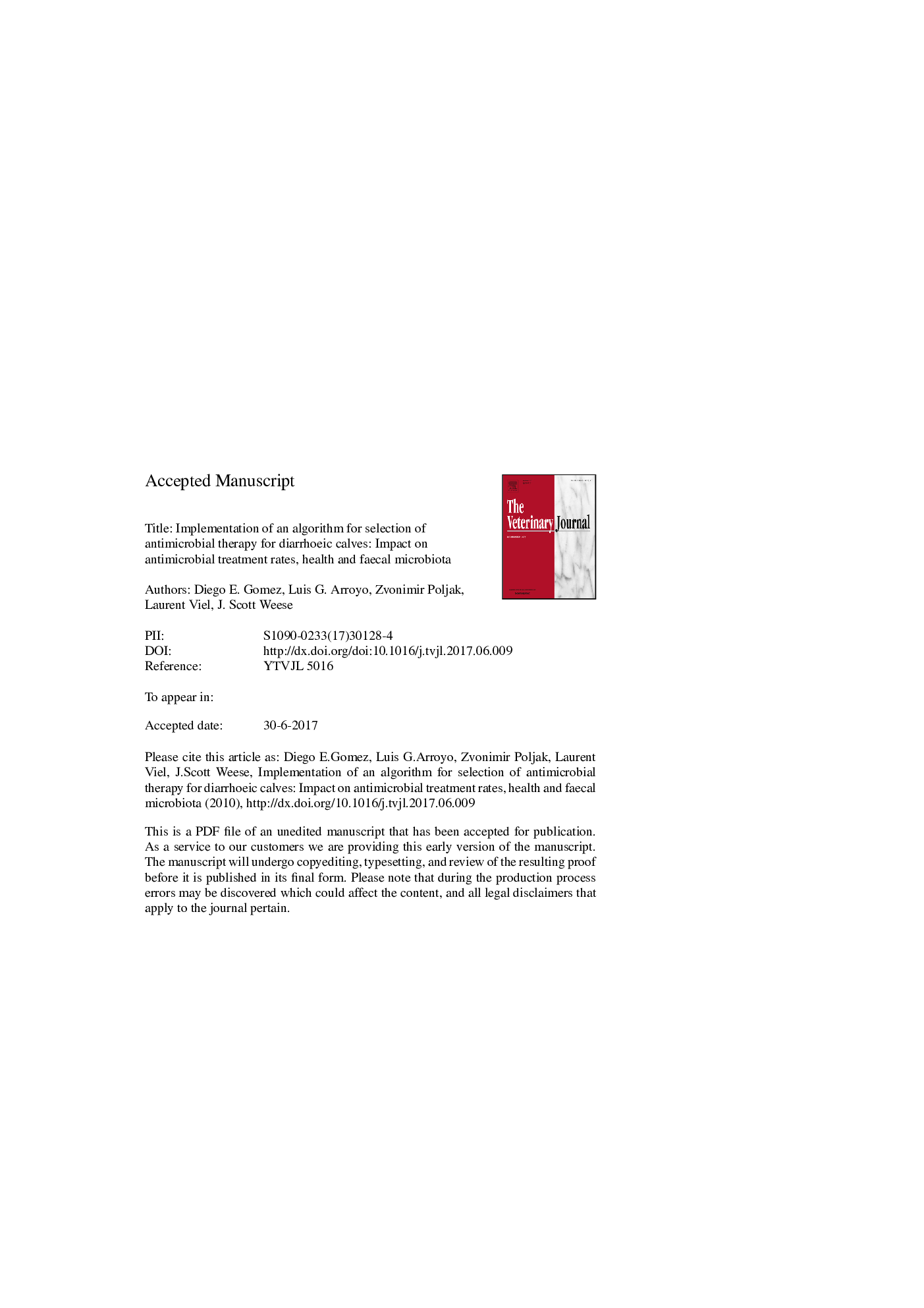| Article ID | Journal | Published Year | Pages | File Type |
|---|---|---|---|---|
| 5544834 | The Veterinary Journal | 2017 | 32 Pages |
Abstract
This study evaluated the impact of an algorithm targeting antimicrobial therapy of diarrhoeic calves on the incidence of diarrhoea, antimicrobial treatment rates, overall mortality, mortality of diarrhoeic calves and changes in the faecal microbiota. The algorithm was designed to target antimicrobial therapy in systemically ill calves from on two dairy farms. Retrospective (farm 1: 529 calves; farm 2: 639 calves) and prospective (farm 1: 639 calves; farm 2: 842 calves) cohorts were examined for 12 months before and after implementation of the algorithm. The Mantel-Haenszel test and Kaplan-Meier survival curves were used to assess the cumulative incidence risk (CIR) and time to development of each outcome before and after implementation of the algorithm. The CIR of antimicrobial treatment rates was 80% lower after implementation of the algorithm on both farms (CIR 0.19, 95% confidence interval 0.17-0.21). There was no difference in the CIR of overall mortality, but the CRI for mortality of diarrhoeic calves was lower in the period after implementation of the algorithm on one farm. The faecal microbiota of 15 healthy calves from both farms at each time period were characterised using a sequencing platform targeting the V4 region of the 16S rRNA gene. On both farms, there were significant differences in community membership and structure (parsimony PÂ <Â 0.001). Use of the algorithm for treatment of diarrhoeic calves reduced antimicrobial treatment rates without a negative impact on the health of calves. However, the experimental design did not take into account the potential confounding effects of dietary changes between the study periods.
Related Topics
Life Sciences
Agricultural and Biological Sciences
Animal Science and Zoology
Authors
Diego E. Gomez, Luis G. Arroyo, Zvonimir Poljak, Laurent Viel, J. Scott Weese,
